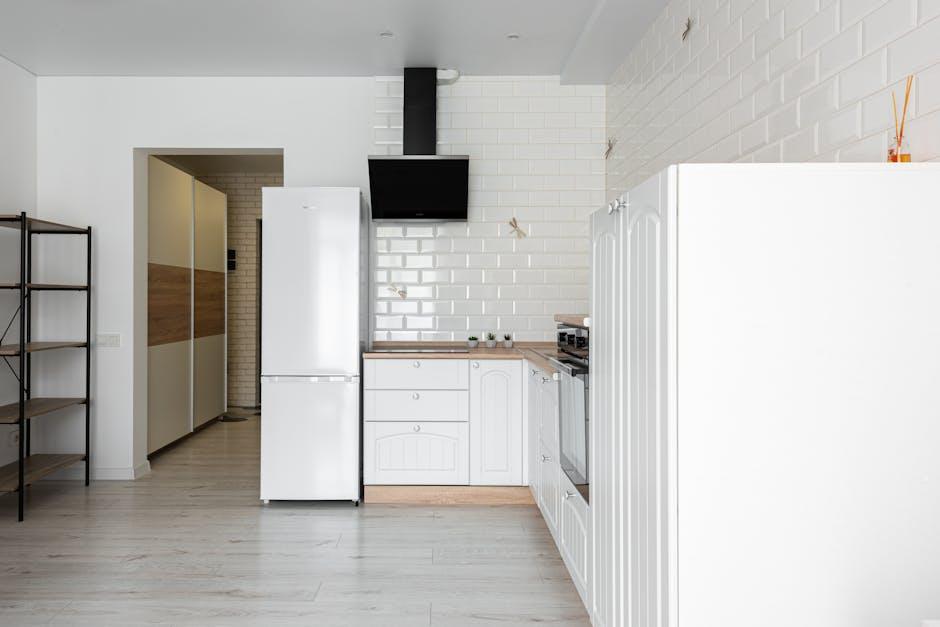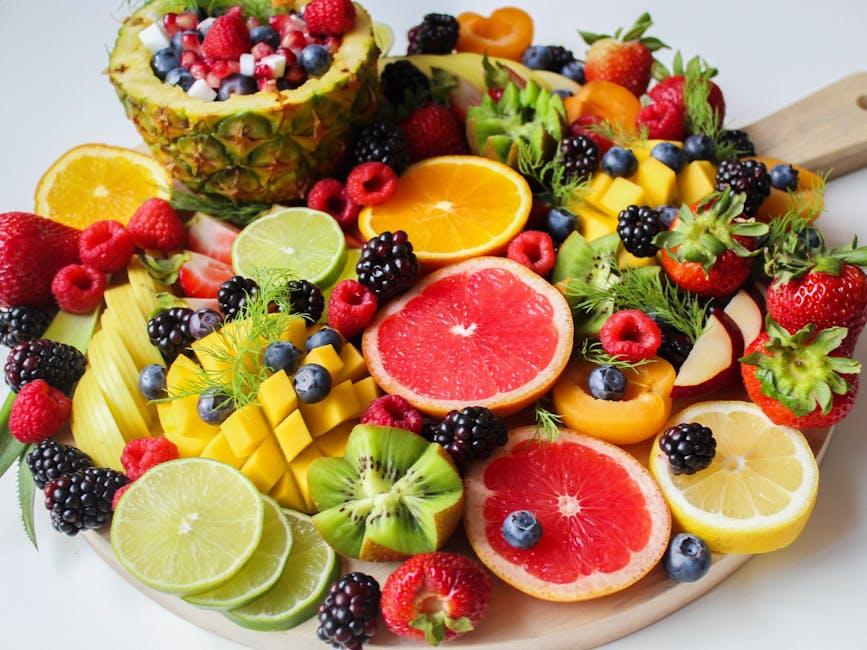In the quiet hum of our kitchens, the refrigerator stands as more than just an appliance-it’s a silent advisor shaping our daily choices. The way we arrange its shelves can subtly steer our eating habits, nudging us toward healthier bites or tempting us with less mindful snacks. This article delves into the fascinating relationship between fridge organization and diet, exploring how strategic placement of foods can transform not only what we see but also what we eventually savor. From eye-level essentials to hidden indulgences, discover how a simple shift in fridge arrangement might just be the small change that leads to a healthier you.
The Psychology Behind Fridge Organization and Food Choices

Our brains respond to visual cues more than we often realize, especially when it comes to food. A well-organized fridge doesn’t just look appealing; it actually guides our eating habits and decision-making processes. When healthy options like fresh fruits, colorful veggies, and lean proteins are placed at eye level and in clear containers, they become the first things we see, making us more likely to choose them. In contrast, hiding indulgent snacks or less nutritious items in harder-to-reach spots can help reduce impulsive, less healthy choices. This subtle nudge leverages the principle of environmental restructuring, where a slight modification in surroundings supports better habits without conscious effort.
Behavioral psychologists have also identified that the *organization* within the fridge can reduce decision fatigue. When foods are categorized logically-dairy products grouped together, vegetables in a crisp drawer, leftovers in clear labeled boxes-it accelerates the selection process, allowing for mindful eating rather than mindless grazing. Below is a simple table illustrating how strategic fridge zones can subtly influence your daily nutrition:
| Fridge Zone | Recommended Food Placement | Psychological Effect |
|---|---|---|
| Eye Level | Fresh produce & healthy snacks | Encourages healthier picks |
| Top Shelves | Dairy & ready-to-eat meals | Quick access, reduces temptation |
| Bottom Shelves | Raw meats & seafood | Safety & hygiene focus |
| Crisper Drawers | Vegetables & fruits | Maintains freshness, boosts consumption |
| Door Compartments | Condiments & beverages | Avoids impulsive drinks snacking |
Maximizing Visibility of Healthy Options to Encourage Balanced Eating

Strategically arranging your fridge can subtly influence your eating habits by promoting healthier choices through increased visibility. Placing fresh fruits and vegetables at eye level or in clear containers within easy reach increases the likelihood of grabbing these nutrient-packed options first. Meanwhile, less healthy snacks and processed foods tucked away in drawers or on lower shelves are less tempting when they’re out of direct sight. This environmental cue acts as a gentle nudge, guiding your decisions without relying solely on willpower.
Consider categorizing your fridge contents into zones to create an intuitive flow toward balanced eating. For instance:
- Top shelves: Ready-to-eat fruits and pre-cut veggies for quick snacking
- Middle shelves: Dairy products and lean proteins you frequently use
- Bottom shelves: Bulkier items like larger containers or less healthy indulgences
- Door compartments: Condiments and beverages, ideally choosing low-sugar and low-sodium options
Here’s a simple visual guide to organizing your fridge for balanced eating:
| Shelf | Ideal Content | Benefit |
|---|---|---|
| Top | Fresh fruit, cut veggies | Encourages quick healthy snacking |
| Middle | Dairy, lean protein | Easy access to meal essentials |
| Bottom | Bulk foods, indulgent treats | Out of immediate sight to reduce cravings |
| Door | Condiments, drinks | Convenience, mindful choices |
Strategic Placement to Reduce Impulse Snacking and Waste

Positioning snacks and treats out of immediate sight, such as placing them on higher shelves or inside opaque containers, can drastically cut down on impulsive nibbling. When unhealthy options are less accessible, you naturally gravitate toward chilled fruits, vegetables, or other wholesome items that are front and center. This simple shift not only supports healthier snack choices but also reduces the chance of quickly forgetting about perishable items, which helps minimize food waste.
Consider grouping similar items together to keep your fridge organized and visually clear. Here’s a quick guide to strategic fridge zones:
- Eye-level shelf: Fruits, veggies, fresh dairy, and pre-prepped meals
- Middle shelves: Leftovers and ready-to-eat items for grab-and-go convenience
- Bottom shelves: Raw proteins, safely separated to prevent contamination
- Door compartments: Condiments and beverages, which don’t spoil as quickly
| Snack Type | Best Placement | Benefit |
|---|---|---|
| Fresh Fruit | Eye-level shelf | Encourages healthy snacking |
| Chips & Sweets | Top shelf or opaque bins | Out of immediate view, less tempting |
| Vegetable Sticks | Clear containers in crisper drawer | Easy to grab and visually appealing |
| Leftovers | Middle shelves | Prevent food waste by visibility |
Practical Tips for Designing a Fridge Layout That Supports Nutritional Goals

Strategically organizing your fridge can nudge you towards healthier eating habits by making nutritious choices more accessible and visible. Start by placing fresh produce at eye level, so vibrant fruits and veggies become the first things you see when opening the door. Use clear, labeled containers to keep pre-cut vegetables and fruits ready for quick snacks. Reserve the middle shelves for dairy and proteins, such as yogurt, cheeses, and lean meats, where they remain cool but visible. Meanwhile, less-healthy options like sugary drinks or processed snacks should be stored on lower or less prominent shelves, reducing temptation without completely masking options.
To make meal planning even easier, consider grouping items by meals or nutrient categories. For example, create zones for breakfast staples (eggs, milk, and whole-grain spreads) and place them together for quick access during busy mornings. Here’s a simple layout guide to visualize this approach:
| Fridge Section | Best Food Types | Tip |
|---|---|---|
| Eye-Level Shelves | Fruits, Vegetables | Clear containers, easy access |
| Middle Shelves | Dairy, Proteins | Use labels to keep fresh |
| Bottom Shelves | Raw Meat, Fish | Store in sealed trays |
| Door Shelves | Beverages, Condiments | Avoid storing milk here |
- Rotate seasonal items to keep variety fresh and interesting.
- Maintain optimal temperature zones to preserve nutrients effectively.
- Keep water bottles visible to encourage hydration throughout the day.
Concluding Remarks
In the end, your fridge is more than just a storage space-it’s a silent architect of your daily choices. By thoughtfully arranging what you see first and where you place nutrient-rich foods, you can gently nudge yourself toward healthier habits without a second thought. So next time you stock your fridge, remember: a well-organized fridge isn’t just about order-it’s a subtle partner in crafting the diet you desire. After all, sometimes the path to better eating starts right at your kitchen door.











